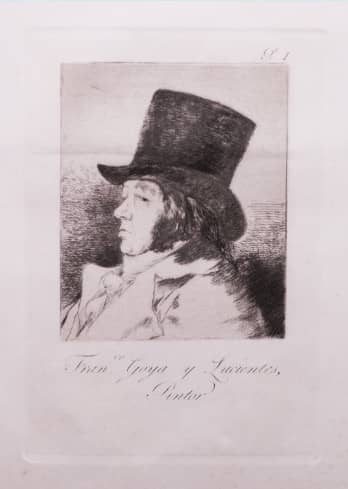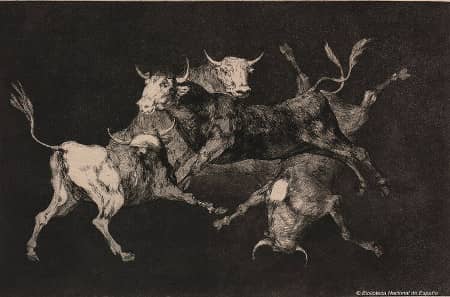
The Academy of San Fernando and its Connection with Goya
The Academy of San Fernando is an emblematic institution in the world of plastic and visual arts and in the training of artists like for example: Goya .
Founded in 1752, the Academy of San Fernando played a fundamental role in the training and promotion of artists in Spain, including one of the most outstanding painters of all time: Francisco de Goya y Lucientes. In this article, we will explore the relationship between the Academy and Goya, highlighting the influence it had on his career and on the artistic panorama of the time (which, as we already know, was not insignificant).
The Academy of San Fernando: A Beacon in Spanish Art
The Academy of San Fernando, originally known as the Royal Academy of Fine Arts of San Fernando, was founded by Fernando VI of Spain with the aim of promoting arts and culture in the country. Since then, as we have already mentioned, its role has been essential in the training of artists and the promotion of visual arts in Spain, and this has been one of its most important functions.

During the 18th century, the academy established a series of educational programs that included classes in drawing, painting, sculpture, and architecture. These training programs played a fundamental role in the development of talented artists, such as Francisco de Goya.
Goya and his Relationship with the Academy
Francisco de Goya is widely recognized as one of the most influential artists in the history of art. His unique style and his ability to capture the complexity of society and the human condition made him a prominent figure in the history of Spanish and world art. The Academy of San Fernando played a crucial role in his life and career.
Goya entered the Academy in 1763, at the age of 16. During his time at the academy, he received rigorous artistic education and had the opportunity to study the great masters of Spanish and European painting. This early training left an indelible mark on his artistic style.

One of the highlights of Goya’s relationship with the academy was his participation in the contests and exhibitions organized by the institution. These events provided an important platform for emerging artists to showcase their work and gain public recognition. Goya participated in several painting contests at the academy and won awards on several occasions. His success in these events significantly contributed to his growing reputation as an artist.
In addition to his participation in contests and exhibitions, Goya also collaborated with the academy on projects of artistic and cultural significance. One of the most notable projects he participated in was the decoration of the Basilica of San Francisco el Grande in Madrid. Goya was commissioned to paint several frescoes on the church’s ceiling, and his work on this project was praised for its technical skill and its ability to blend the traditional with the innovative.
The Influence of the Academy on Goya’s Work
The training Goya received at the Academy of San Fernando left a deep imprint on his work. During his years as a student, Goya became familiar with classical painting techniques, such as anatomical drawing and composition. However, what distinguished Goya was his ability to subvert these conventions and create his own style.
The influence of the academy on Goya’s work is evident in his ability to realistically and meticulously represent the human figure. His portraits and historical paintings demonstrate an exceptional mastery of technique, allowing him to capture the psychology of his subjects in a deep and moving way.
As he progressed in his career, Goya moved away from academic conventions and developed a more personal and expressive style. His masterpieces such as “The Third of May 1808” and “Saturn Devouring His Son” (both in the Prado Museum) show his ability to explore dark and disturbing themes in a way that challenged the artistic expectations of the time. This change in his artistic style, departing from academic and formalistic norms, marked a significant milestone in the history of art and contributed to the evolution of Romanticism.
Legacy of Goya and the Academy of San Fernando
The relationship between Francisco de Goya and the Academy is a testament to the lasting impact this institution had on the training and promotion of artists in Spain. Goya was not only a product of the academy but also contributed to enriching and expanding the Spanish artistic tradition through his innovative and visionary work. Today, we can enjoy some of his great works in the academy, which has been transformed into a museum: the prints (Caprichos, The Disasters of War), and thirteen paintings, including the famous “The Burial of the Sardine.”

The Academy continues to be an important institution in the world of art, supporting emerging artists and promoting visual culture in Spain. Its legacy endures through the centuries, just as the impact of Francisco de Goya on the history of Spanish art.
In summary, the relationship between the Academy of San Fernando and Francisco de Goya is a prominent example of how an educational institution can influence an individual’s artistic development and enrich a country’s culture.
Goya, with his exceptional talent, carried the lessons learned at the academy to become an undisputed master of painting. The Academy of San Fernando and Goya are two names that will remain in the history of Spanish art forever, united by their contribution to the flourishing of visual arts in Spain and beyond.
If you have enjoyed this article about the Academy of San Fernando, do not miss our Free Tour Madrid of the Bourbons, where we will tell you the curious story behind the facade of the academy. Join us to continue discovering Madrid together!